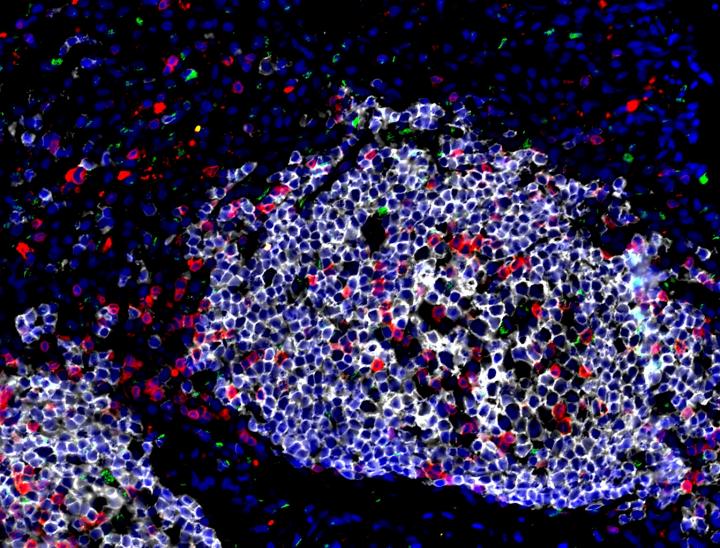Discovery may provide a new target for TB drugs, vaccines, NIH-supported research suggests

Credit: NIAID
A class of immune cells called innate lymphoid cells (ILCs) mediates the body’s initial defense against tuberculosis (TB), according to a report published online today in Nature. Boosting this response may provide a new approach to developing treatments and vaccines against TB, which causes more deaths worldwide than any other single infectious disease. The research was supported in part by the National Institute of Allergy and Infectious Diseases (NIAID), a component of the National Institutes of Health. It was conducted by scientists at Washington
University School of Medicine in St. Louis in collaboration with scientists at the Africa Health Research Institute in KwaZulu-Natal, South Africa, and other institutions.
Identified only in the past decade, ILCs can initiate quick, nonspecific responses against pathogens and also mount protective immune responses directed against specific pathogens. In this study, researchers observed that among people who were infected with Mycobacterium tuberculosis (Mtb), the bacterium that causes TB, a subset of ILCs moved from the blood to the lungs, where TB infections frequently take hold.
Investigators also tracked the activity of ILCs in several animal models. In mice with intact immune systems, ILCs homed to infected lung tissue and used messenger molecules to recruit the scavenger cells of the immune system, macrophages, to form protective granulomas, or small areas of inflammation, to suppress the infection. Mice without functioning ILCs, however, had low levels of macrophages in lung tissue and poor immune control over their TB. The human and animal data led investigators to conclude that ILCs play an early, pivotal and previously unappreciated role in TB immunity.
Increasingly, Mtb is resistant to conventional antibiotic treatments. While the Bacille Calmette-Guerin (BCG) vaccine can prevent Mtb infection in infants and young children, no vaccine is approved to prevent TB in older children and adults. Because ILCs seem to protect early in TB disease, investigators suggest that probing the newly described pathway may yield novel approaches to TB treatment and prevention.
###
ARTICLE:
A Ardain et al. Group 3 innate lymphoid cells mediate early protective immunity against tuberculosis. Nature DOI: 10.1038/s41586-019-1276-2 (2019).
WHO:
Alison Deckhut-Augustine, Ph.D., chief of the Basic Immunology Branch in NIAID’s Division of Allergy, Immunology and Transplantation, and Nancy Vazquez-Maldonado, Ph.D., a program officer in the same branch, are available for comment.
CONTACT:
To schedule interviews, please contact Judith Lavelle, (301) 402-1663, [email protected].
NIAID conducts and supports research–at NIH, throughout the United States, and worldwide–to study the causes of infectious and immune-mediated diseases, and to develop better means of preventing, diagnosing and treating these illnesses. News releases, fact sheets and other NIAID-related materials are available on the NIAID website.
About the National Institutes of Health (NIH): NIH, the nation’s medical research agency, includes 27 Institutes and Centers and is a component of the U.S. Department of Health and Human Services. NIH is the primary federal agency conducting and supporting basic, clinical, and translational medical research, and is investigating the causes, treatments, and cures for both common and rare diseases. For more information about NIH and its programs, visit http://www.
NIH…Turning Discovery Into Health®
Media Contact
Judith Lavelle
[email protected]
Related Journal Article
http://dx.




